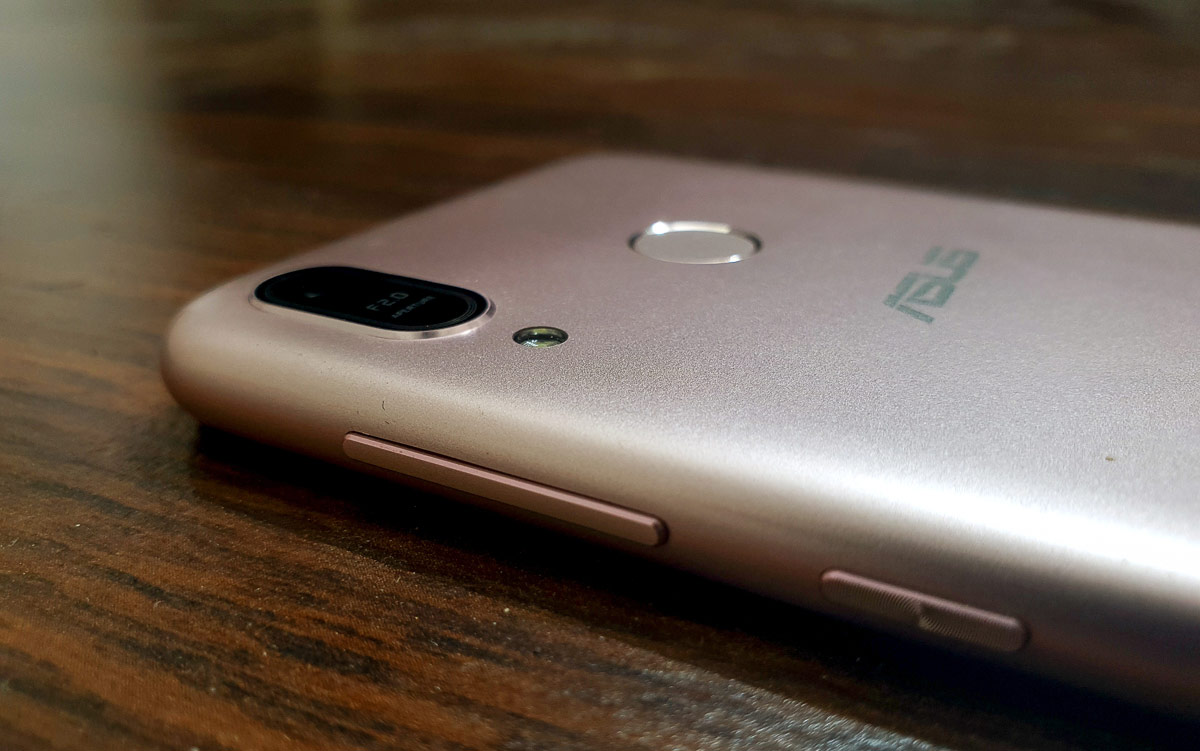The Zenfone Max M1 is one of the two affordable and compact phones that Asus has launched in India to compete against reigning Redmi and Realme alternatives. If the name sounds familiar, that’s because Asus also launched a stock-Android equipped ‘Pro’ variant earlier which was also the first viable Redmi Note 5 Pro alternative.
So, is the Zenfone Max M1 worth being excited about? Is it any better than the Redmi 6 (review) or Realme 2(review)? Let’s discuss more in our Asus Zenfone Max M1 quick review.
Zenfone Max M1 Specifications and Price
| Model | Zenfone Max M1 |
| Display | 5.45-inch HD+ (1440×720) display |
| Processor | Snapdragon™ 430 Mobile Platform with 64-bit Octa-core Processor |
| RAM | 3GB |
| Internal Storage | 32 GB (expandable up to 256GB) |
| Software | Android 8 Oreo-based ZenUI 5 |
| Primary Camera | 13MP (f/2.0)phase-detection autofocus, LED flash |
| Secondary Camera | 8MP(f/2.0) Selfie camera with flash |
| Fingerprint sensor | Yes,rear-mounted |
| Battery | 4000mAh with fast charging |
| Price | Rs. 7,499 |
What’s In the Box:
- Handset
- Wall Charger
- Data Cable
- User guide
- Sim tray ejector pin
Design and Build
The Zenfone Max M1 is light, graceful and compact, even when it houses a massive 4000mAh battery inside. The rear camera sits flush with the neat and minimal polycarbonate back and the rear-mounted fingerprint sensor is perfectly accessible.
On the front, the Zenfone Max M1 has a notch-free screen with symmetrical bezels at the top and bottom. The audio jack is present up top, and the micro USB port is at the bottom.
Overall, the Zenfone Max M1 isn’t anything flashy, but it’s still a well-designed phone that’s comfortable to wield and operate. It should be particularly appealing to consumers who prefer a smaller footprint on their phones.
ALSO READ: Asus Zenfone Max Lite L1 First Impressions – Game On
Display
The 5.45-inch screen IPS LCD screen has an adequate 720P HD+ resolution. Other than that, there isn’t much to applaud or criticize about the screen. It’s in the same ballpark as most IPS LCD panels that we come across on affordable phones.
Outdoor visibility and Dynamic range are about decent, whites lean towards cold blue tones, and there is no option to adjust color temperature under display settings. Asus hasn’t added any eye-protection mode or blue light filter either.
ALSO READ: Samsung Galaxy J8 Review – The Best J-Series Phone in 2018?
Performance and Software
The Asus Zenfone Max M1 is powered by Snapdragon 430 octa-core chipset, which isn’t exactly an aggressive option for an online exclusive retailing at 9K. Further, there is 32GB of internal storage and a dedicated card slot.
The day-to-day performance isn’t snappy but we didn’t encounter any major lag or stuttering in our initial testing. This is, however, subject to change after a period of usage. This isn’t a phone meant for moderate or heavy users, but perhaps basic users shall be able to make ends meet.
Asus is back to using ZenUI (instead of stock Android) on its affordable phone, but that’s ok since the new ZenUI is light and efficient. Even when it has been stripped of several features to run smoothly on the budget hardware, the interface is better designed than, say, Color OS or MIUI. In our personal opinion, of course.
The Zenfone Max M1 has both the fingerprint sensor and face unlock – both of which work reasonably fast. We haven’t tested call quality much as of now, but we will update our findings soon in our full review.
Camera Expectations and Battery
The Asus Zenfone Max M1 has standard camera specs. The rear 13MP camera sensor has a f/2.0 aperture lens, PDAF and is underlined by an LED flash. The 8MP selfie camera gets a flash too.
It’s still too soon to give any verdict on the camera quality, but we’d advise you to balance your expectations. It won’t be fair to expect much in terms of camera performance from any phone priced under 10K.
The 4000mAh battery on the Zenfone Max M1 is quite alluring, though. Asus bundles a 10 Watt charger in the box that can charge the phone in a little more than 2 hours.
ALSO READ: Honor 8X FAQ with Pros and Cons – All Questions Answered
Asus Zenfone Max M1 Quick Review – Should you buy it?
The Asus Zenfone Max M1 looks like a first-class option for basic smartphone buyers. It’s a well-designed phone with a light and agreeable software, big battery and a dedicated card slots – which are exactly the features that most budget smartphone buyers demand and prioritize. But yes, a slightly better chipset, say Snapdragon 450, would have made it a lot more lucrative for all classes of users. We will continue testing the Zenfone Max M1 and will be back with a final verdict soon.
The handset will take on the likes of Redmi 6 and Realme 2 in India and will be available for Rs 7,499 INR this festival season. Later, the price will shoot up to Rs. 8,999.
